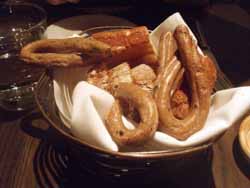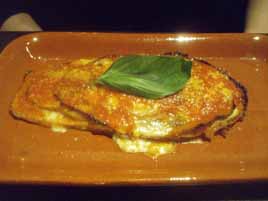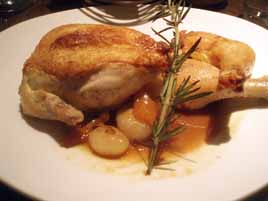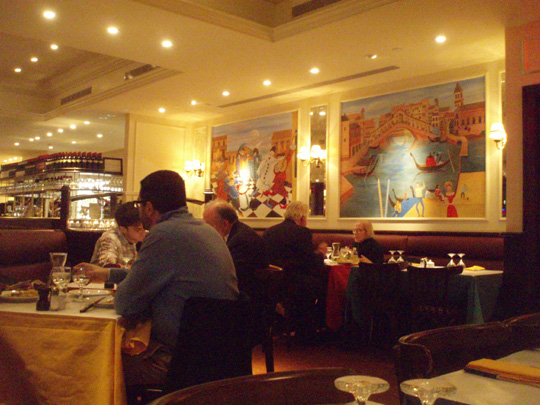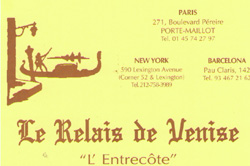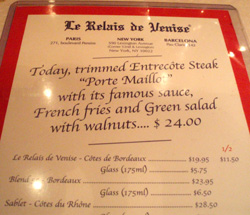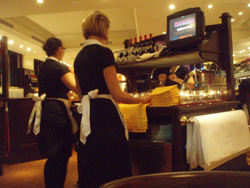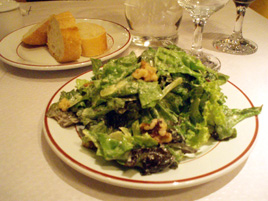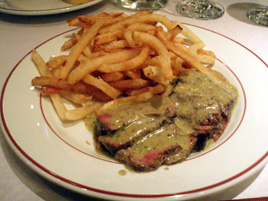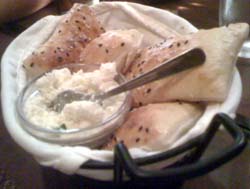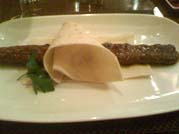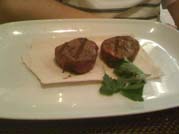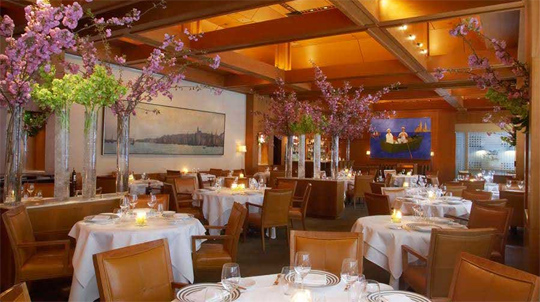Zengo
 Tuesday, May 11, 2010 at 03:48PM
Tuesday, May 11, 2010 at 03:48PM  There is no good reason why the East Midtown restaurant space at 40th Street & Third Avenue ought to be cursed. But cursed it apparently is. Four Jeffrey Chodorow places failed there—most recently Wild Salmon—before the Chod finally gave up.
There is no good reason why the East Midtown restaurant space at 40th Street & Third Avenue ought to be cursed. But cursed it apparently is. Four Jeffrey Chodorow places failed there—most recently Wild Salmon—before the Chod finally gave up.
Zengo is the latest to give it a shot. The hyperactive chef Richard Sandoval is in charge, but with fifteen other restaurants in five U. S. cities and three countries, I suppose I should put that in scare quotes, as in, “in charge.” In case you’re wondering—admit it, you were!—this is the third Zengo, after Denver and D.C.
With Sandoval in demand everywhere from Mexico to Dubai, he needed a solid hand in the kitchen, and he had one in former Elettaria chef Akhtar Nawab. But less than a month into the venture, Nawab took a hike. The reasons remain unexplained, but are easy to guess. Zengo is a dumb idea, sloppily executed. Any self-respecting chef would be embarrassed to be associated with it.
Although Jeffrey Chodorow is not involved here, his uncanny propensity for error hovers over the space like a death stink. A Latin–Asian restaurant that serves sushi rolls, dim sum, and tapas? Only the Chod would suggest something so obviously ill-conceived, so gimmicky, so pandering, so offensive to common sense. The menu is like something you’d find at an airport food court, offering a bit of everything without any sense of purpose. The cooking is better than at an airport, but the service isn’t.


From a meandering list of small plates in multiple categories, we started with the Peking Duck-Daikon Tacos ($12; above left), which was the best thing we tried. Thin daikon wafers passed for pancakes, which held slices of duck confit, curried apple, and an orange-coriander sauce. However, we ran out of daikon before we ran out of duck.
Braised Pork Belly ($13; above right) was swimming in a lentil sea. It is hard to overwhelm pork belly, but this plate managed it. You could barely taste the pork.
We ordered a bowl of fried rice ($8; below left) as a side dish, but the kitchen delivered it as a mid-course. At first, we thought this was intentional, but the server disabused us of that: “Your main courses will come out as and when they’re ready.”
Sure enough, “as and when” is the mantra here, often to the customers’ dismay. At two different tables, we saw plates sent back because diners had only just received their first group of appetizers. At one table, the server got into an argument, instead of just admitting the screw-up. Although the restaurant was not full, plates were shot out of the kitchen at machine-gun pace, as if the staff wanted to empty the room as quickly as possible.
We didn’t send anything back, but this was not a relaxing meal.



Neither of the entrées looked especially attractive on the plate: Grilled Colorado Lamb Loin ($27; above center), Braised Short Ribs ($24; above right). The lamb was wonderful, but we didn’t much care for the lazily-plated assortment of vegetables underneath it. The short ribs were slightly on the dry side.
Real thought went into the beverage program here. There is a wide selection of both reds and whites. At $42, the 2008 Cline Cashmere Meritage was a very good choice at the lower end of the list. There are over 400 tequilas and mezcals, and a separate downstairs lounge (La Biblioteca) in which to enjoy them.
The folks at AvroKO did their usual bang-up job with the décor, although the cavernous three-story space is bound to feel like a airplane hangar, practically no matter what you do with it. And it’s hard to imagine it will ever be full.
The opera singer Plácido Domingo is a partner here. One’s immediate reaction is that he ought to stick to music.
Zengo (622 Third Avenue at 40th Street, East Midtown)
Food: Satisfactory
Service: Fair
Ambiance: Satisfactory
Overall: Satisfactory







